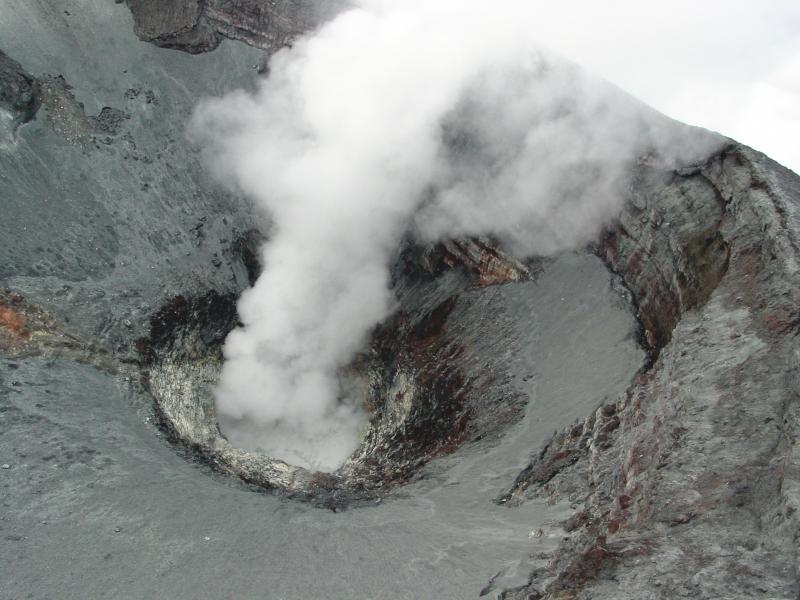
Aerial view into the summit crater of Korovin. This level of fumarolic emission from the slightly oblong, 60–90 m (200–300 ft) diameter, sheer-walled orifice at the bottom of the crater is apparently fairly typical and can account for the periodic observations of plumes from Atka Village. At times, a shallow body of gray, turbid water partially fills the inner crater and, in 2004, was observed roiling. Phreatic explosions from this water-rich, high-temperature system may be responsible for the occasional localized ash-fall deposits seen on the upper flanks of Korovin. Photograph by R.G. McGimsey, AVO/USGS, July 19, 2004.
Volcano(es): Atka volcanic complex Korovin
Photographer: McGimsey, R. G.
URL: avo.alaska.edu/image/view/12465
Korovin 2004/6
McGimsey and others (2008) and Neal and others (2009) detail satellite imagery and field observations of ash on the upper east flank of Korovin volcano in late June - early July, 2004, likely from a small phreatic eruption of Korovin prior to late June.
Please cite the photographer and the Alaska Volcano Observatory / U.S. Geological Survey when using this image.
Full Resolution.